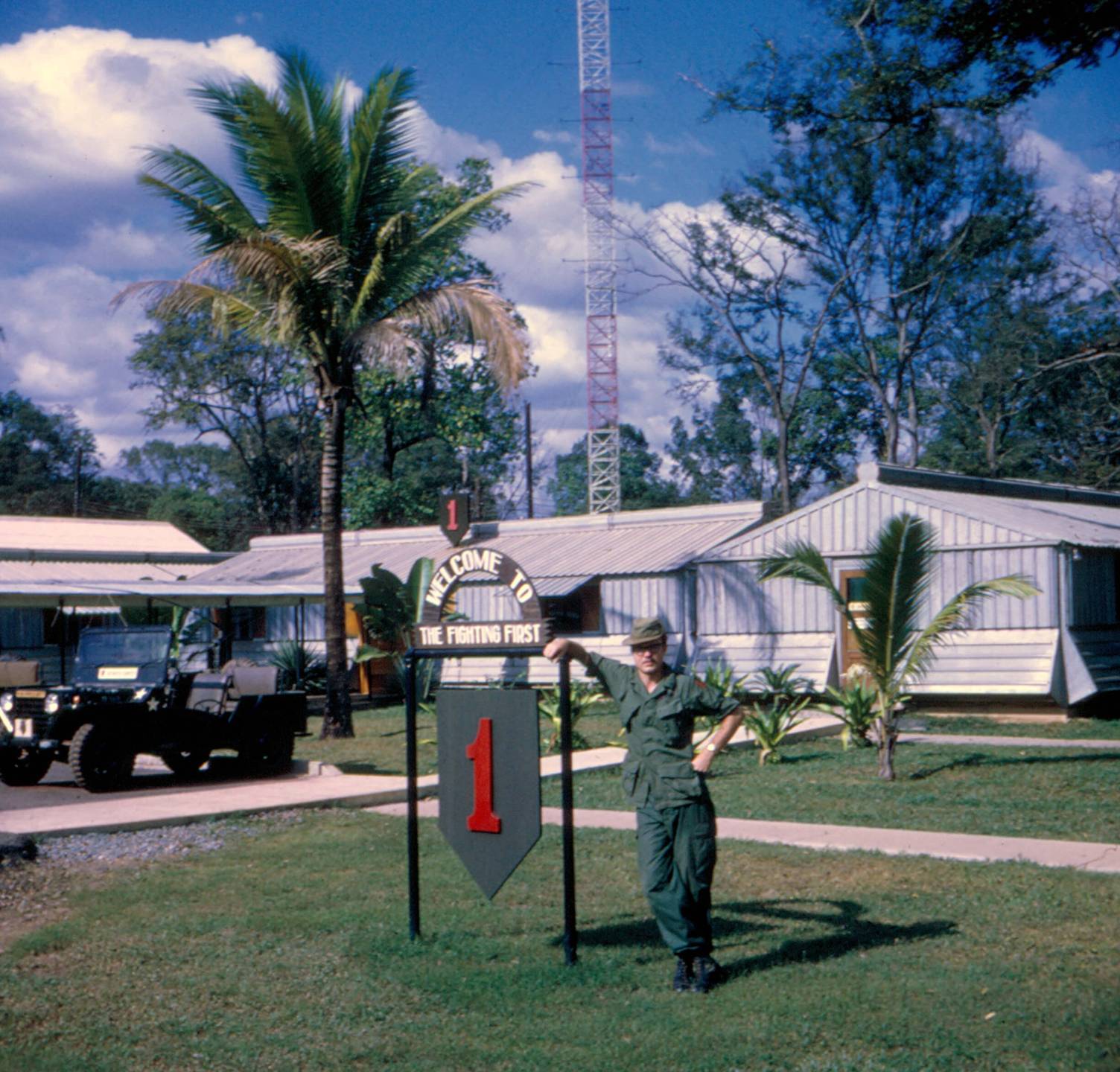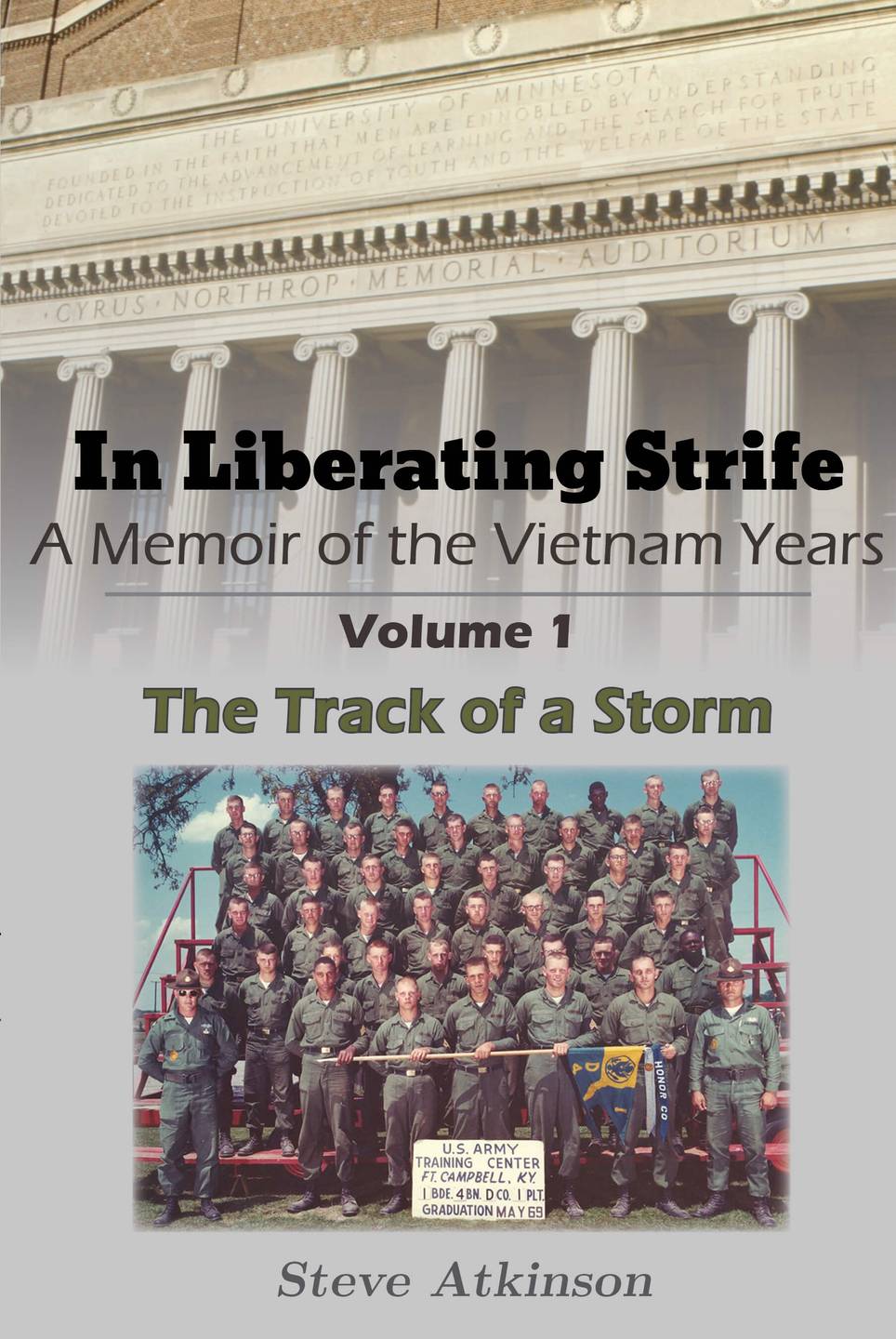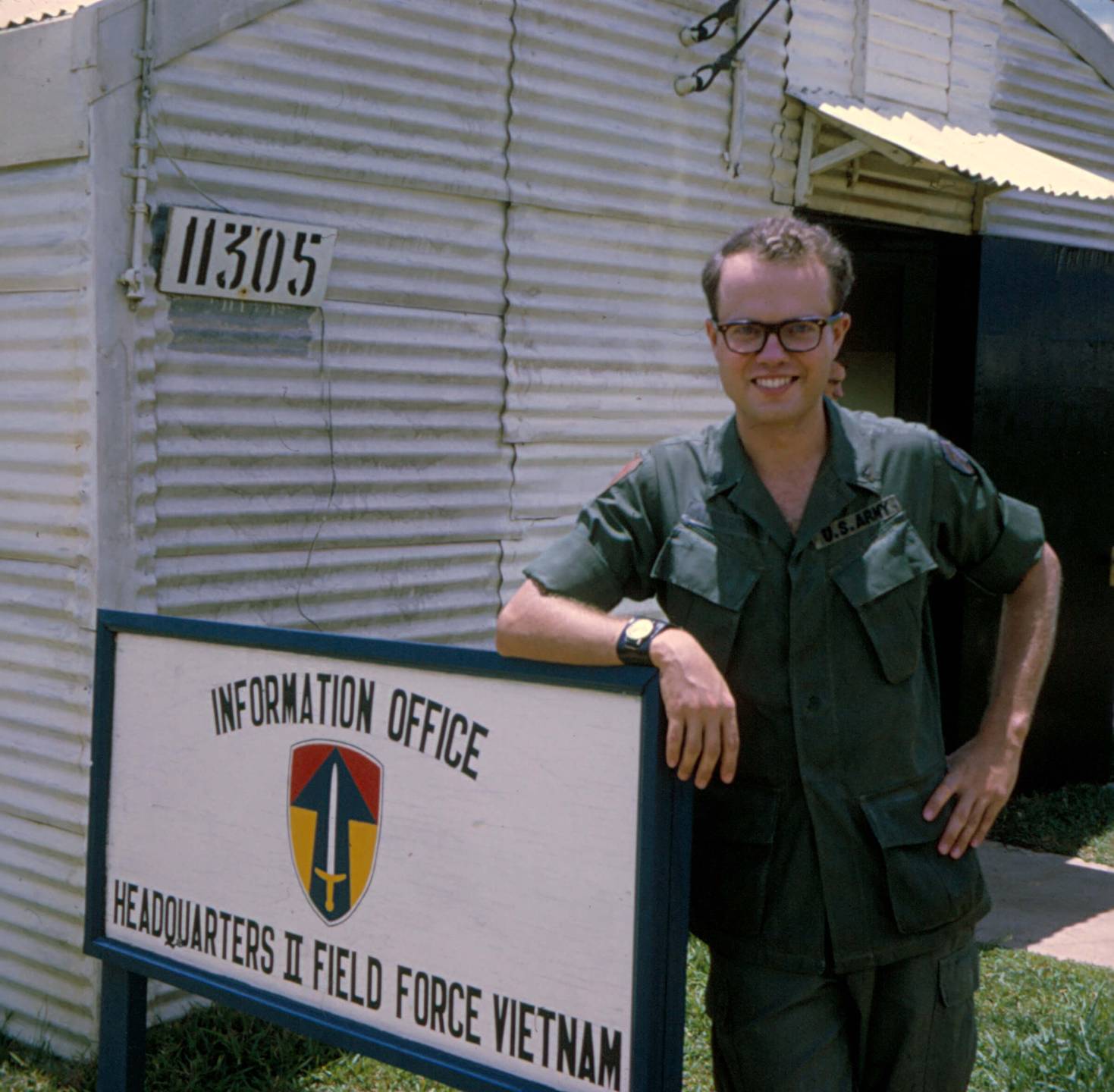
 A Minnesota PBS Initiative
A Minnesota PBS Initiative
In early 1969 I had just gotten unofficially engaged to the lady who is now my lovely wife of forty-six years, Beverly, and was working on an MA in English at the University of Minnesota when I was drafted into the Army.
This was not a surprise because our troop strength in the RVN was at its peak and over forty thousand men per month were required to replace the ones coming home because their year was up. We had Basic Training at Ft. Campbell, KY, and then advanced training at Ft. McClellan, AL.
I was trained for the infantry as a crew member for the 81 mm mortar. After a short leave back in Minneapolis, in October I shipped out of Oakland Army Base via Travis Air Force Base and eighteen hours later we landed at Bien Hoa Air Base in the RVN.
They bused us over to the 90th Replacement Battalion at Long Binh Post, which I have been told was the largest military reservation in the world at that time. They assigned me to the 1st Infantry Division and then bused us over to Di An to be assigned to field units, which is where I got the biggest break of my Army career. They just happened to be short of clerk-typists at the time so they picked out a few of us who could type and gave us desk jobs instead – I couldn’t believe it.

Me in front of 1st Infantry Division HQ at Lai Khe in 1969.
Most of the HQ company was right there at Di An, a little northeast of Saigon, but the actual commanding general’s office and all his immediate support staff were up at Lai Khe, about forty clicks north on Highway 13, Thunder Road.
The idea was that the people in charge should be close to the action and that whole area, especially the Iron Triangle, was known to be hot. In fact Lai Khe was nicknamed Rocket City because of all the incoming rockets and mortar rounds, usually at night. We called the tall communications tower by HQ with its glowing red aviation warning lights “Charlie’s Goalposts.”
All of that didn’t bother me much because it was paradise compared to being out in the field and the guys who did that duty will always be my heroes.
I was assigned to the division adjutant general’s office, and there was a group of about six of us who did things like putting together reports, filling out orders and requisitions, sorting mail, scheduling the division band, and answering questions on procedures and regulations. At that time guys went over as individuals, not with units, so I had not known any of the people I worked with, but we soon became close friends. An Army buddy is a special friend for life, whether or not you ever see each other again back in the USA.
One of my favorite jobs was writing up recommendations for awards because then I could take the simple facts of what happened and turn it into a more compelling narrative – that’s the writer in me. The folks reviewing the material probably didn’t care much about the arc of the story, but that’s what you get when you give an assignment to an English major, and our recommendations were all successful.
The units I was assigned to sustained no KIAs during my time there. As they say, there were no rounds with one of our names on them, but there were a fair number marked “to whom it may concern.”

Front cover of Volume 1 of my memoirs to be published later in 2017. (Top photo by the author. Bottom photo by US Army, uncopyrighted.)
Lai Khe was on one of the old Michelin rubber plantations and we used some of the abandoned French buildings with their whitewashed walls and red tile roofs. There was also a monument the French had erected in honor of their fallen when they were leaving Vietnam after having been defeated by the communist forces in 1954 - food for thought whenever I walked by there.
One highlight of my tour of duty was seeing the Bob Hope Christmas Show at Lai Khe in 1969. Observing our location among the rows of rubber trees, he said “every job in the Army is important, and I’m glad to see you guys are here guarding next year’s supply of bras and girdles.” Of course, he always brought a bunch of beautiful girls with him, but the biggest thrill for me was getting to see the astronaut Neil Armstrong, just five months after he became the first man to walk on the moon during the Apollo 11 mission.
President Nixon began the troop reductions early in 1970 and The Big Red One was slated to go back to Fort Riley, KS. The AG always took good care of his men and a particular point of pride for us was that we all received the Bronze Star, without V device, before leaving the division in recognition of frequent exposure to hostile fire.
That’s when I was reassigned to II Field Force, a three-star command, and the 16th Public Information Detachment. We were located at Plantation, which was sort of a suburb of Long Binh.
The 16th’s primary mission was to provide information to IIFF personnel on the many activities of our units as a way of boosting morale and keeping the troops informed about “the big picture” of the purpose of our intervention in the RVN. We also featured articles on various aspects of Vietnamese history and culture. The hope was always that troops who had a better understanding of our purpose would be more highly motivated to perform well, especially since so many of us were there involuntarily.
Our primary publication was The Hurricane, and our reporters spent much of their time out in the field and at bases researching stories and then writing them up. The Pacific edition of the Stars and Stripes newspaper was a big publication during the war and sometimes our stories would be picked up there as well. We also produced audio stories for Armed Forces Radio. There was one station that broadcast all over the RVN, as well as many smaller ones on some of the larger bases. There are many sound files from the broadcasts of these stations available on the internet. I do not recall that our guys ever did any video work – there was no small hand-held video equipment yet and there would have been a long processing delay with movie film.
The most news-worthy event during my six months with the 16th was the US movement into Cambodia in May, 1970. Several of our reporters went in with the troops. They observed, conducted interviews, and took many photos, and the result was our best issue ever of The Hurricane: the September, 1970, Cambodia Special.
Since I was fortunate enough to be stationed behind the lines during my entire year in-country, the units I was assigned to sustained no KIAs during my time there. As they say, there were no rounds with one of our names on them, but there were a fair number marked “to whom it may concern.”
Our only WIA was Sp4 David Massey who was seriously wounded while on assignment with the 16th. Dave was gathering information for a story on a river patrol boat which struck a mine. He was wounded severely enough to be sent back to the US, reminding all of us that there truly are no non-combatants in a combat zone.
I always followed the news of the anti-war movement back in the States because I felt those activists were friends of the troops since shortening a war that seemed destined to end in a stalemate by 1970 would reduce the number of needless casualties.
I was discharged upon my return to the US in October, 1970. Bev and I were married and I went back to college on the GI bill, eventually earning two more degrees. I recently completed my memoirs of those tumultuous years, entitled "In Liberating Strife: A Memoir of the Vietnam Years," which will be published shortly.
Submitted From: Minneapolis, MN

Primary Location During Vietnam: Lai Khe, Di An, and Plantation Combat Base, Vietnam 
Story Subject: Military Service
Military Branch: U.S. Army
Dates of Service: 1969 - 1970
Veteran Organization: VVA, VFW, American Legion
Unit: 1st Infantry Division, II Field Force Vietnam
Specialty: 81 mm mortar, clerk-typist

At the office of the 16th Public Information Detachment at Plantation Combat Base in 1970.
Story Themes: Brotherhood, Commendation, Draft, Medals of Honor, News Coverage, Plantation Combat Base, Relationships, War Correspondent